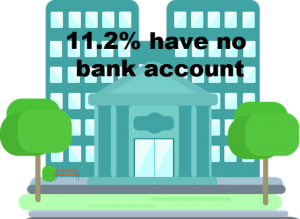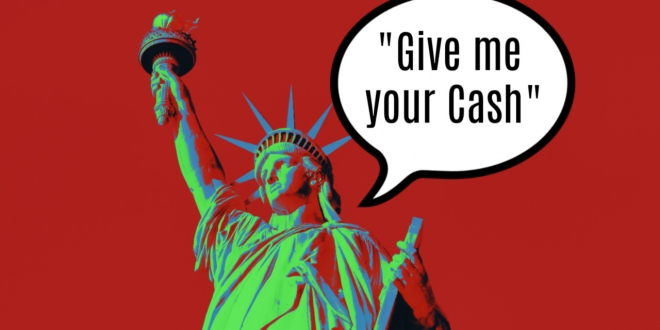
New York City, the country’s largest, became the third US city to banish cashless-only transactions following similar bans in San Francisco and Philadelphia as well as the ban imposed by the state of New Jersey.
Critics have long claimed cashless-only transactions disadvantage the poor, the un-banked, and those without digital resources.
The New York ban was originally proposed in 2018 by NYC councilor Ritchie Torres and now goes to Mayor Bill de Blasio’s office for final signoff.
Regulations and fines for violations
The new law will prohibit restaurants and retail merchants from charging cash customers a higher price than other payment types or limiting transactions to cashless-only purchases
There are several exemptions to the restrictions. Merchants can refuse to accept bills larger than $20 and also limit payments to credit cards or other digital payments if they have an ATM machine on site.

Online, phone, or mail-order transactions will also not be affected by the restrictions.
A study by the city’s consumer affairs department showed 11.2% of New York City residents have no bank account and as many as 22% of residents used alternate banking services such as check-cashing stores.
In a news conference before voting approval, Counselor Torres said consumers should be free to choose how they pay for products and services whether it’s using cash, contactless or other digital payments. “Whatever your reasons, consumers should have the power to choose their preferred method of payment.”
Industry support
Stores experimenting with cashless-only transactions like Amazon Go may increasingly need to accommodate other jurisdictions prohibiting cashless-only payments despite the benefits to many consumers.

The Retail Council of New York State (RCNY) issued a statement supporting the cashless-only ban and more choices for consumer payments.
“Our members welcome every shopper, from the people who want to pay with cash to the people who want us to be wired with the latest technology,” said Ted Potrikus, President and CEO of RCNY. “We’re sensitive to the concerns that the City Council put on the table and are happy to be working with them to make this work for everyone.”
Krista Tedder, head of payments research at Javelin Strategy & Research, said cash payments need to be part of the payment industry’s customer service mix.
In an email to Digital Transactions News Tedder said, “The payments industry will need to innovate solutions that move beyond digitizing everything. Having services which include cash needs to be a priority to ensure everyone is able to participate in the economy. Capabilities need to be cash loads for prepaid products, cash deposits for digital wallets, cash withdrawals from digital wallets or P2P activity at ATMs without having a card. Consumer choice in how to pay, including cash, is seen as a positive step of payment innovation.”
Not all businesses support the new regulation. Dos Toros restaurant co-founder Leo Kremer said his chain’s cashless-only payments were a way to manage business finances better and help customers get their meals quickly.
The new regulation will compel merchants to comply or face penalties of $1000 for a first transgression increasing to $1500 for subsequent violations.
Card payments growing fast

According to a 2019 Federal Reserve Payments Study, total US card payments reached $7.08 trillion over 131.2 billion transactions in 2018. That was an increase of 28.3% over the $5.52 trillion on 101.5 billion transactions in 2015.
In 2018, the Federal Reserve said US debit card payments exceeded cash payments for the first time.
There’s no question the payments industry is moving quickly towards digital dominance of payments but many inside and outside the industry agree that a range of payment options serve all consumers best. The move by New York City simply confirms that reality for the immediate future until new technology and innovations provide equal footing for all consumers.








LET’S CONNECT